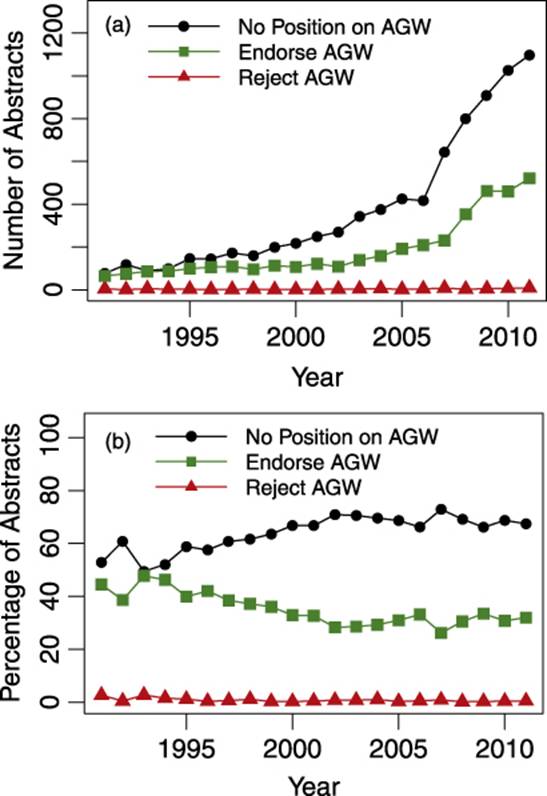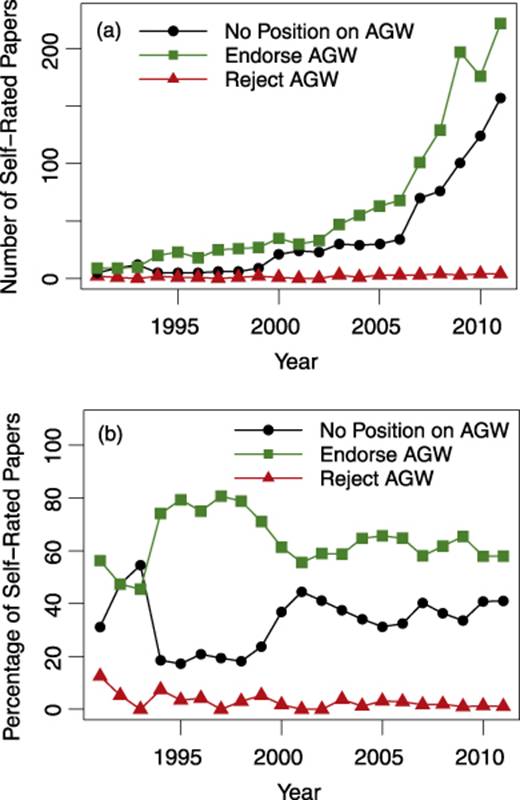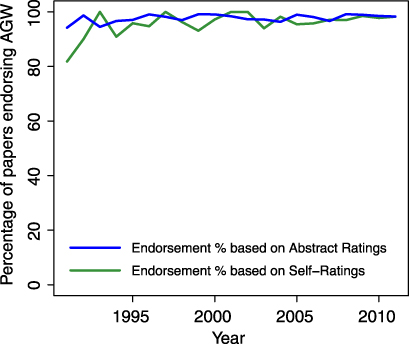Climate Crisis Is Man Made, Scientists Nearly Unanimous
By Countercurrents.org
16 May, 2013
Countercurrents.org
More than 97% of peer-reviewed papers in scientific journals agreed that climate change is caused by human activity. A survey analyzed the evolution of the scientific consensus on anthropogenic global warming (AGW) in the peer-reviewed scientific literature examining 11, 944 climate change related papers by 29,000 scientists from the period of 1991–2011. It found 97.1% agreed that climate change is caused by human activity.
The survey titled “Quantifying the consensus on anthropogenic global warming in the scientific literature” by John Cook, Dana Nuccitelli, Sarah A Green, Mark Richardson, Bärbel Winkler, Rob Painting, Robert Way, Peter Jacobs and Andrew Skuce has been published on May 16, 2013 in Environmental Research Letters, Volume 8, Number 2 * .
Authors of the survey said the finding of near- unanimity provide a powerful rebuttal to climate change deniers, who insist the science of climate change remains unsettled.
Of the 4,000-plus papers that took a position on the causes of climate change only 0.7% or 83 disputed the scientific consensus that climate change is the result of human activity and the remaining 2.2% was unclear.
The study blamed powerful lobbying efforts by interested industry to undermine the science behind climate change for the gap in perception. The resulting confusion has blocked efforts to act on climate change.
The survey was the most ambitious effort to date to demonstrate the broad agreement on the causes of climate change, covering 20 years of academic publications from 1991-2011.
In 2004, Naomi Oreskes, historian at the University of California , San Diego , surveyed published literature. The survey results were released in the journal Science. She too came up with a similar finding that 97% of climate scientists agreed on the causes of climate change.
The present survey is broader in its scope. The survey also asked authors to rate their own views on the causes of climate change.
The survey fond that 66.4% of abstracts expressed no position on AGW, 32.6% endorsed AGW, 0.7% rejected AGW and 0.3% was uncertain about the cause of global warming. Among abstracts expressing a position on AGW, 97.1% endorsed the consensus position that humans are causing global warming.
In the phase of authors rating their own papers, a smaller percentage of self-rated papers expressed no position on AGW (35.5%). Among self-rated papers expressing a position on AGW, 97.2% endorsed the consensus.
The analysis, the study report said, indicates that the number of papers rejecting the consensus on AGW is a vanishingly small proportion of the published research.
Citing other studies the authors of the present study said in the “Introduction ” section:
An accurate perception of the degree of scientific consensus is an essential element to public support for climate policy. Communicating the scientific consensus also increases people's acceptance that climate change (CC) is happening. Despite numerous indicators of a consensus, there is wide public perception that climate scientists disagree over the fundamental cause of global warming.
Repeated surveys of scientists found that scientific agreement about AGW steadily increased from 1996 to 2009. This is reflected in the increasingly definitive statements issued by the Intergovernmental Panel on Climate Change on the attribution of recent GW.
The researchers classified each abstract according to the type of research and degree of endorsement. Definitions of each type of research category included “Impacts”, “Methods”, “Mitigation”, “Opinion”, etc. The ratings were consolidated into three groups: endorsement, no position and rejections.
Figure 1. (a) Total number of abstracts categorized into endorsement, rejection and no position. (b) Percentage of endorsement, rejection and no position/undecided abstracts. Uncertain comprise 0.5% of no position abstracts.
Figure 2. (a) Total number of endorsement, rejection and no position papers as self-rated by authors. Year is the published year of each self-rated paper. (b) Percentage of self-rated endorsement, rejection and no position papers.
Figure 3 below compares the percentage of papers endorsing the scientific consensus among all papers that express a position endorsing or rejecting the consensus.
Figure 3
Citing a survey by Pew in 2012 the researchers said in the “Conclusion ” section:
There is a significant gap between public perception of a scientific consensus on AGW and reality, with 57% of the US public either disagreeing or unaware that scientists overwhelmingly agree that the earth is warming due to human activity. Contributing to this 'consensus gap' are campaigns designed to confuse the public about the level of agreement among climate scientists.
Citing other researchers the study report said:
In 1991, Western Fuels Association conducted a $510,000 campaign whose primary goal was to 'reposition global warming as theory (not fact)'. A key strategy involved constructing the impression of active scientific debate using dissenting scientists as spokesmen. The situation is exacerbated by media treatment of the climate issue, where the normative practice of providing opposing sides with equal attention has allowed a vocal minority to have their views amplified. While there are indications that the situation has improved in the UK and USA prestige press the UK tabloid press showed no indication of improvement from 2000 to 2006.
The narrative presented by some dissenters is that the scientific consensus is '...on the point of collapse' while '...the number of scientific "heretics" is growing with each passing year'. A systematic, comprehensive review of the literature provides quantitative evidence countering this assertion.
* IOP Science, Environmental Research Letters, Volume 8, Number 2,
John Cook et al 2013 Environ. Res. Lett. 8 024024,
doi:10.1088/1748-9326/8/2/024024
© 2013 IOP Publishing Ltd. http://iopscience.iop.org/1748-9326/8/2/024024/article ,
This work is used under the terms of the Creative Commons Attribution 3.0 licence.
Comments are moderated





